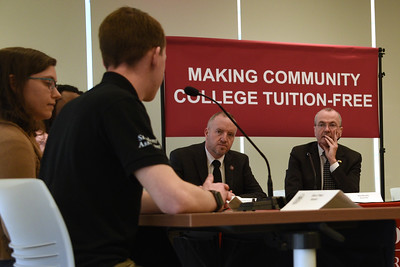A recently released report on community college enrollment trends show areas of opportunity to increase the population of students on campus. It’s important to remember that this report covers general national trends. Specific geographic regions may experience different enrollment patterns in response to regional and national events.
If you have time to read the report, it’s worth taking a look at. For me, two items stand out. First, the report examined the impact of so-called “free college” programs in two states – Tennessee and Oregon. The analysis includes data from first-term enrollments in both states. In Tennessee, in the first year of the program (2014-15), community college enrollment there increased by 28%. In following years, first-term enrollments leveled off and have remained largely steady.
Oregon introduced a similar program in 2016. First-term enrollments in Oregon had already been increasing at the time the program was introduced. Since its introduction, first-term enrollments there have continued to rise steadily. They have not leveled off, as what happened in Tennessee. With only two states to compare, it’s difficult to draw conclusions about the long-term impact of these programs. (Except to say that community college enrollments increased in both places.)
The second item that jumps out is the data on first-time college student enrollments before, during and after the Great Recession. The report compares community college enrollments to enrollments at “other degree-granting institutions.” These “other institutions” include both public and private four-year institutions, and private, for-profit colleges. During the Great Recession, enrollments at community colleges rose as enrollments at “other” institutions declined. As the economy recovered, first-time enrollments at “other” institutions increased as community college enrollments dropped.
Free college, federal student loans and community college enrollment
Under the Obama administration, the US Department of Education took significant steps to limit enrollment at for-profit education institutions. These institutions compete directly with community colleges. Following the implementation of new rules regarding federal student loan funds, many of these institutions ceased operations. The current administration has again relaxed rules regarding the use of federal student loan funds at for-profit institutions.
Restricting the use of federal student loan funds at for-profit schools positively impacted community college enrollment. Relaxing federal student loan rules will likely have a negative effect on enrollment.
I find it curious that the current WCC administration and some Trustees eye the Governor’s “free college” program with a certain political suspicion, even though similar programs have resulted in increased community college enrollments in other states.
Pragmatically, a state-funded “free college” program is no different than the federal student loan program. In fact, the College should prefer the “free college” option over federal student loans. In theory, a “free college” program should reduce WCC’s higher-than-average rate of default on federal student loans among its graduates. At the same time, it should also increase enrollment.
The College administration and the Board of Trustees should put their personal politics aside long enough to see the benefits to WCC that this approach offers.
Photo Credit: Phil Murphy, via Flickr










